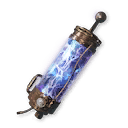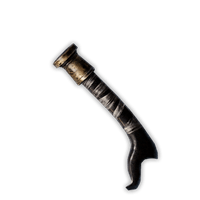In this Lies of P Beginner Guide, we will be sharing with you our best tips and tricks to start your journey against the crazed puppets of Krat. Be assured that anything that you may miss out on will be included in this guide, so read on!
Class selection
At the start of the game you will be asked to choose between 3 different classes called “Combat Memories”, and this will determine your initial Default Abilities (Stats). Don’t feel threatened by this choice, as this is not the end-all of your build, however keep in mind you will not be able to respec your default class stats. The three selections you get are the Path of the Cricket: Balance, Path of the Bastard: Dexterity, and Path of the Sweeper: Strength.
If you want to wield regular Swords and some relatively large Weapons, the Balanced path is the way for you. If you are looking to use Daggers, Spears or fancy Rapiers then you will want to go for the Dexterity path. Lastly, if you prefer to attack with massive weapons such as Cleavers, Hacksaws or Hammers, the Strength path will be your best choice. If you are new to Souls-Like games, I would just recommend going for the Balanced Path and using regular swords to learn the game. Once you feel comfortable, you can experiment in the practice area of the game to find what really suits you.

Leveling Up
Let’s begin this section by highlighting that there is a respec system and it can be found about halfway through the game. Respec allows you to reallocate Levels, P-Organs and Legion Arms, so don’t feel too pressured about these early game decisions. Be mindful respec does not allow you to change your original class stats.
Your Default Abilities can be leveled up by spending Ergo that you can gain from killing Enemies, or picking up fragments of it on the ground. As you level up, the cost of Ergo will exponentially increase and make leveling feel slow, so the first 50 levels will be important.

For point allocation, my recommendation would be to invest into Vitality for the first 5-10 levels, as that extra HP makes the game much more forgiving of your mistakes. I then spent my next 5 or so levels focused on the stat which increases my weapon damage the most, which will either be Motivity or Technique depending on what type of weapon you want to use. If you are running the Balanced build, then I would recommend leveling these two simultaneously.
For the next 10 levels I pumped Vigor a lot to get extra stamina which is incredibly helpful against bosses and large groups of enemies. At this point, I started to get a lot of Capacity, which increases the amount of weight P can hold. I leveled this in order to start equipping high level Puppet Parts that would reduce damage taken drastically, while keeping P under 80% load in his weight stat. This is important because his normal roll becomes much slower when you pass the 80% threshold, so if you want to equip those heavy puppet parts to be tanky, make sure you invest in Capacity.
After level 30, I suggest you try to meet these goals in whatever order you please: Vitality – 30, Vigor – 20, Capacity – 20, Motivity/Technique – 30, Advance – Minimum Possible. If you are using a Balanced build, 20 and 20 for Motivity and Technique. Note that if you feel as if you don’t need the extra tankiness from puppet parts, you won’t need to level capacity much.
At this point you may be wondering about the Advance Default Ability. This stat is very rarely used, and is only effective on some specific weapons and legion arms. I recommend avoiding this entirely unless you have a specific weapon in mind that uses it.
DON’T USE BOSS ERGO:
An important thing when leveling up is to not be tempted to use Boss Ergo. If you read the description of any Rare Ergo you get from defeating bosses, it mentions that “A treasure hunter may want this rare Ergo”. This Treasure Hunter will exchange powerful items in exchange for your Rare Ergo, but you won’t meet him for some time, so until then hang onto them and don’t use them for leveling up. It will be worth it.

Discharging Pulse Cells
A small but important tip going forward is understanding what the Discharged status means. When you use up all of your Pulse Cells (the game’s healing flask), you enter the Discharged state which allows you to regenerate 1 Pulse Cell by damaging enemies. When you do enough damage, you will regenerate the Pulse Cell and can use it normally. You will enter the Discharged state again after using it. So, whenever you use up all of your Pulse Cells against a Boss, it may be better to start getting more offensive than defensive so that you can regenerate that Pulse Cell and keep healing. There are also upgrades you can make to your P-Organs which will make you stronger in the Discharged state.

P-Organ Upgrades
As with Leveling, don’t feel too pressured by the choices in P-Organ as you will be able to respec it later.
You will be able to upgrade P using Quartz that you find throughout the game. You can acquire Quartz from not just Bosses, but chests and minibosses as well, so keep on the lookout for those.
In the P-Organ menu, you will see large nodes and small nodes next to them. The large nodes all have an upgrade effect that can only be activated by filling all of the small nodes next to it using Quartz. In those small nodes, you can select a small upgrade for P. There are 5 different types of small upgrades; Attack, Survival, Ability and Item types. You may only select 1 type per large node. For example, you can only have 1 Attack Upgrade in a large node, and then you need to choose from the 3 other types to fill in the other small nodes.

Now, what P-Organ upgrades are good? To start, I suggest going for as many Pulse Cell upgrades as possible. So the Large node, “Increase Pulse Cells” and the Survival Upgrade “Increase Pulse Cells”. Any Pulse Cell upgrade you find will be useful, as they are a core element of your gameplay.
Large nodes that will be very helpful are Link Dodge, Add Amulet Slots, Add Fable Slots and Retain Guard Regain. You will get large node upgrades later on for other combat systems; I recommend just going for upgrades on things that you find yourself using often.

For the small node upgrades, you want any Pulse Cell, Guard Regain and Fable Art nodes. Besides those upgrades, anything Stagger-related should be good, especially on heavy weapons that inflict lots of stagger damage. Paired with that, Fatal Attack damage will give you good damage from staggering. Any stamina-reducing upgrade is great too, for your dashes, dodges and attacks.
Weapon Upgrades
As with most souls-likes, you can upgrade your weapon using Moonstones that you can find from Enemies, on the ground, in shops, or in questlines. Using Moonstones and Ergo will allow you to upgrade the blade of any weapon you find, except Special Weapons which require Full Moonstone of the Covenant. Moonstones of the Covenant are limited in the world, but every normal Moonstone besides Full Moonstones will be infinitely purchasable, so you don’t need to worry about spending them to upgrade the weapons you are currently using.

Handle Altering Materials
You will get Cranks in the game which can change the scaling of handles so it can better suit your build. There are 4 types: Motivity, Technique, Advance and Balance. These are limited, so don’t use these on just any weapon. They allow great flexibility in builds by making some scalings skew from technique-supported to Motivity supported.
How to make your own Weapon
When making your own Weapon, it’s really easy to get lost and sink a couple hours into messing with all of the possible combinations. The best way to make a weapon you will like is by trying out all of the initial weapons, finding which blade you like the most and then finding which handle has your favourite attack pattern.

When I made my weapon, I wanted something with range, while still keeping good attack speed. I started by finding my favourite blade, the Bone-Cutting Sawblade which had great physical damage and huge range, then tried to find the handle. Handles that came from heavy weapons usually had very slow attack patterns, so instead I went with a balanced Sword handle, the Bramble Curved Sword Handle which gave me good attack speed as well as a very powerful fable art.
When you make your own weapon, try to start by finding a weapon you really like, then experiment by using the handle of that weapon with different blades, or the blade of that weapon with a different handle. It’s a fun process that allows you to make your weapon work well for your playstyle!
Wishstones & Specters:
Specters are AI allies that join you in combat. When you get your Wishstone, you will be able to empower your Spectre. In my experience, the Specter was best used as a distraction rather than a source of damage, so I like to use the Friendship Wishstone and the Indomitable Wishstone to keep it alive for longer.
To summon a Specter, you will need a consumable called Star Fragment. This item is easily purchased later on and is a common drop from enemies so don’t worry if you use them all up. If you find yourself struggling on a boss a lot even with a specter and you don’t have a lot of this material, then I suggest farming some Ergo and leveling up before you use it all so that you don’t have to do a boss solo if you don’t want to.
Consumable Tips
When you play, you may worry that your Consumables may be valuable or have other purposes for later. Fortunately, Legion Magazines and Fable Catalysts are very common in the game, as well as Attribute Purification Ampoules, Attribute Resistance Ampoules and Sawtoothed Wheels. All other consumables that you get have at most 20 copies, with some only appearing 4 times such as Cat Dust. As such, I suggest using the rarer consumables against Minibosses and Bosses.

Status Effects:
There are 4 Attribute Status Ailments in the game and 3 Special Status Ailments. The ailments that might catch you off guard are Decay, Break and Disruption. Decay will slowly reduce your weapon durability, so don’t be in the middle of a fight while afflicted with this. Break will heavily reduce the HP you regain from using Pulse Cells, so make sure to wait it out before healing. Lastly, Disruption will instantly kill you if the bar fills, so be very careful with how much Disruption damage you take. Break and Disruption can be cured with the “Special Purification Ampoule” consumable and mitigated with “Special Resistance Ampoule“. Decay can be cured with the “Attribute Purification Ampoule” and mitigated with “Attribute Resistance Ampoule”. All of these can be found in the world as treasure or purchased from Polendina in Hotel Krat.
Exploration & NPCs
Exploration is an important part of Lies of P and checking around nooks and corners can yield valuable Quartz, Weapons and questline objectives. It’s worth looking around carefully and paying attention to the text items you pick up to get context on what is going on.

Additionally, you should make sure you talk to NPCs often. They have new dialogue frequently, usually after you complete an area, and may give you important exposition or items. Always thoroughly explore areas to find NPCs that appear outside of Hotel Krat in order for them to provide you with their services.
That wraps up our Lies of P Beginner Tips & Tricks Guide. There’s a lot more to the game than what I mentioned here, you can find a lot of more in-depth information by visiting our Lies of P Wiki. If you have your own tips to share, please do so in the comments below!
If you want to know what we thought of the game check out our Lies of P Review.

Log in to leave a Comment